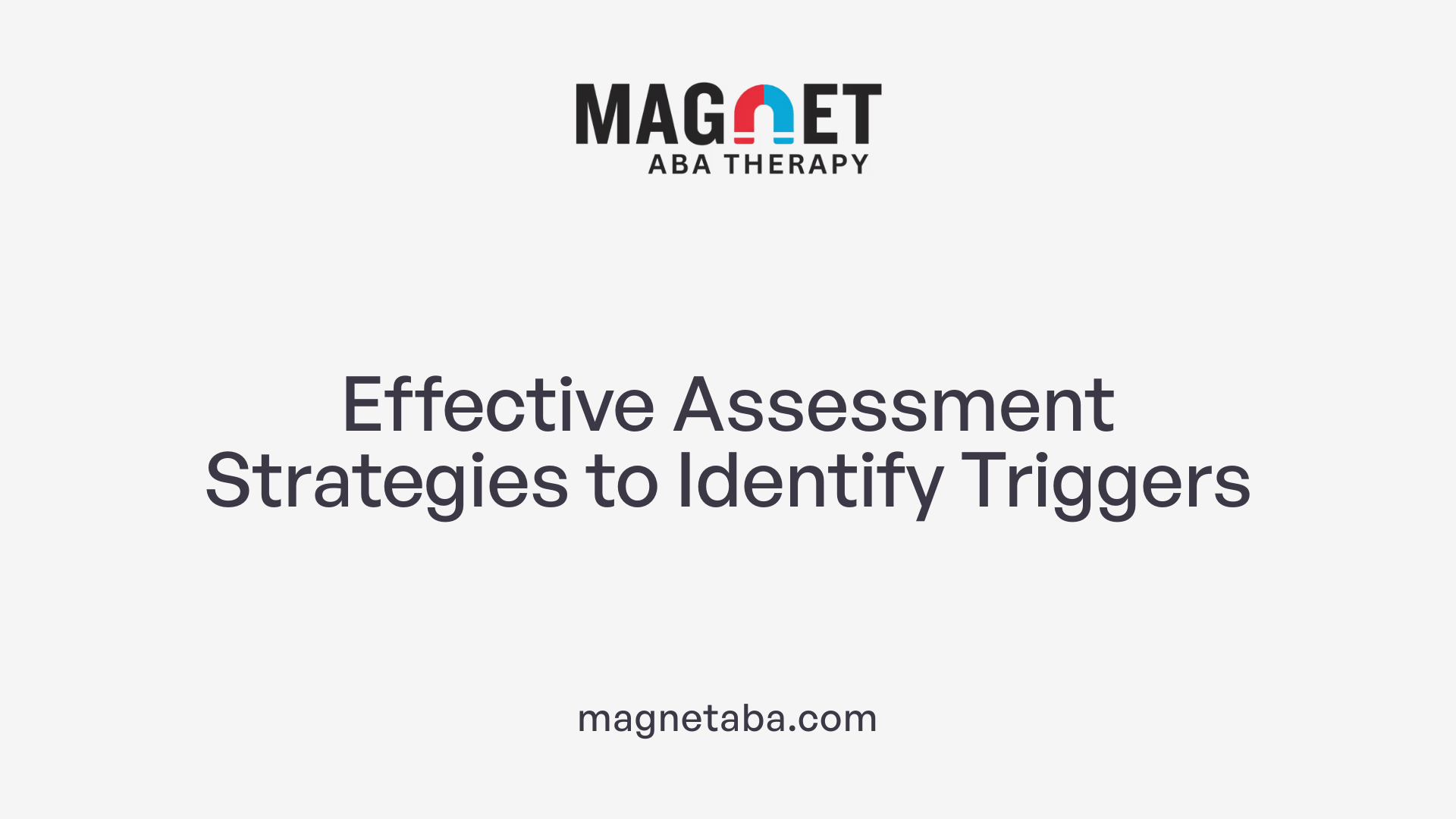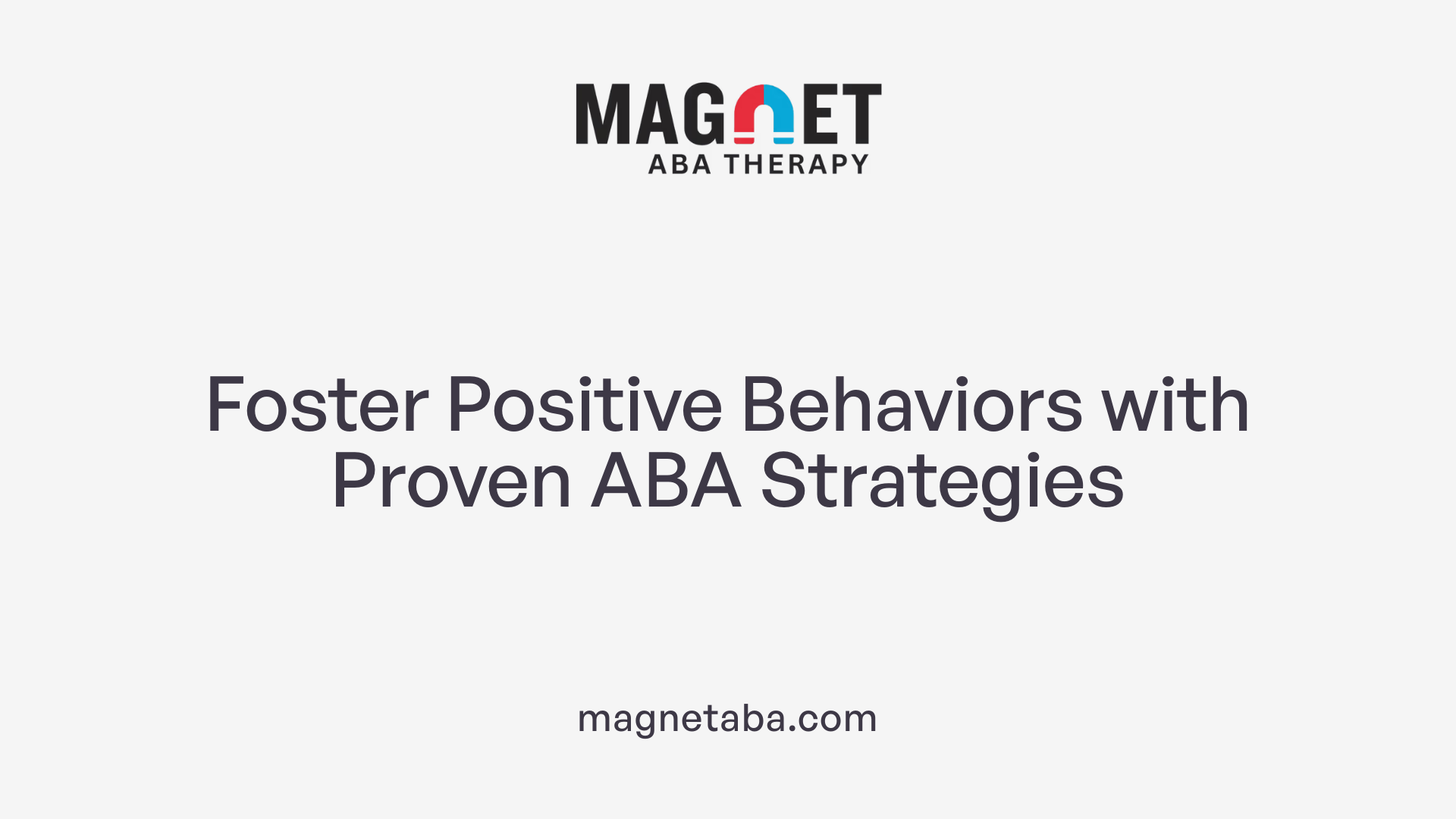Understanding and Addressing Aggression in Autism with ABA
Aggressive behaviors in individuals with autism can significantly impact their quality of life and that of those around them. Applying evidence-based practices such as Applied Behavior Analysis (ABA) offers a systematic way to assess, understand, and reduce such behaviors. This article explores how ABA strategies, comprehensive assessments, and tailored interventions can help manage aggression effectively.
Assessing the Scope and Triggers of Aggression in Autism
 Understanding aggressive behavior in children with autism begins with thorough evaluation methods designed to identify triggers and underlying causes. One of the most effective tools in this process is the Functional Behavior Assessment (FBA). This comprehensive assessment examines the events that occur before and after aggressive episodes, helping to determine why these behaviors happen.
Understanding aggressive behavior in children with autism begins with thorough evaluation methods designed to identify triggers and underlying causes. One of the most effective tools in this process is the Functional Behavior Assessment (FBA). This comprehensive assessment examines the events that occur before and after aggressive episodes, helping to determine why these behaviors happen.
The FBA involves observations, interviews with parents and caregivers, and analysis of behavior logs or diaries. Special attention is paid to the environment, sensory stimuli, communication challenges, and biological factors. For example, if a child becomes aggressive when asked to change activities or is startled by loud noises, these insights help clinicians pinpoint specific triggers.
Medical conditions or comorbidities can also influence aggression. Sleep problems, gastrointestinal discomfort, or mood disorders may contribute to the intensity or frequency of aggressive acts. Recognizing these factors allows for a more holistic intervention plan.
In addition to direct observation, assessments can include functional analysis, where different environmental scenarios are systematically tested to see which provoke aggression. This helps clarify whether a behavior serves purposes such as gaining attention, escaping demands, or seeking sensory input.
Environmental modifications, sensory regulation strategies, and communication support are then tailored to address identifiable triggers. Data collection throughout this process—tracking when and where aggression occurs—supports ongoing adjustment of interventions, increasing their effectiveness.
Ultimately, thorough assessment methods are essential for developing personalized strategies that reduce aggression and promote healthier communication and behavior in children with autism.
Understanding the Causes of Aggression in Autism

What are the causes of aggressive behavior in individuals with autism?
Aggressive behaviors in individuals with autism often stem from a mixture of underlying factors. Understanding these causes is essential for developing effective interventions.
One primary factor is communication difficulties. Many children with autism struggle to express their needs or feelings verbally, which can lead to frustration and, at times, aggressive outbursts as a way to signal distress.
Sensory processing challenges also play a significant role. Over- or under-sensitive reactions to sensory stimuli—such as loud noises, bright lights, or textures—may overwhelm a child, prompting defensive or aggressive responses.
Emotional and environmental factors contribute further to aggression. Situations like changes in routine, separation anxiety, or environmental overload can increase irritability. Emotional states like anxiety, frustration, anger, and boredom often manifest as aggression if the child's needs are unmet or if they cannot communicate effectively.
Medical and biological influences shouldn’t be overlooked. Pain, discomfort from medical issues, sensory sensitivities, or sleep problems such as insomnia can heighten irritability and lead to aggressive episodes.
Additional contributors include higher irritability levels, attention problems, and environmental triggers like crowded or noisy settings. These factors can exacerbate issues and result in aggressive responses.
Addressing these root causes involves a comprehensive approach. Behavioral interventions tailored to each child help mitigate triggers. Enhancing communication skills through strategies like functional communication training (FCT) allows children to express needs appropriately, reducing frustration. Sensory regulation techniques and environmental modifications can also create more calming spaces.
In certain cases, medical management may support behavioral goals, especially when biological factors significantly impact behavior. Overall, understanding and addressing the multifaceted causes of aggression can significantly improve quality of life for children with autism and their families.
Applying ABA Techniques to Manage and Reduce Aggression

What is the function of aggressive behaviors?
Understanding why a child with autism exhibits aggression is fundamental for effective intervention. ABA professionals conduct a Functional Behavior Assessment (FBA) to pinpoint the cause of aggressive acts. These behaviors often serve a purpose, such as gaining attention, escaping from undesirable tasks, or fulfilling unmet needs. By examining what happens before and after an episode of aggression, therapists can determine if the behavior is a response to frustration, sensory overload, or other triggers.
Knowing the function helps tailor interventions that address the root causes rather than just suppressing symptoms. For example, if a child hits to escape a difficult task, teaching them a communication alternative to express discomfort can reduce future aggression.
How are behavioral interventions used to manage aggression?
Behavioral strategies in ABA focus on both preventing aggressive episodes and promoting positive behaviors. This includes modifying antecedents—things that happen before the behavior—to reduce triggers. Visual supports, clear expectations, and sensory regulation tools help create a calming environment.
During therapy, reinforcement plays a crucial role. Desired behaviors like requesting a break or using words or gestures are positively reinforced with praise or preferred activities. Reinforcement increases the likelihood of these appropriate behaviors occurring instead of aggression.
Consequences such as mild time-outs or ignoring aggressive acts can also diminish their frequency, but only when carefully applied. Consistency across all settings ensures that the child learns new, healthier ways to communicate.
What is the role of Functional Communication Training (FCT)?
Teaching functional communication skills is vital in reducing aggression. FCT involves helping children learn alternative and appropriate ways to express their needs, wants, or frustrations.
For example, a child who displays aggression to access an iPad can be taught to ask for it verbally, use visual cues, or tap a picture to communicate. These skills fulfill the same function as the aggressive behavior but in a more acceptable manner.
FCT is often combined with visual supports, timers, and consistent reinforcement to ensure the child develops effective communication methods that reduce the need for aggressive episodes.
How do environmental modifications help?
Adjusting the environment plays a significant role in managing aggression. Antecedent strategies like reducing sensory overload, offering choices, and providing access to sensory regulation tools help prevent frustration.
Visual supports, such as schedules and social stories, prepare children for upcoming activities and reduce anxiety. Creating predictable routines and minimizing unexpected changes help lower stress levels, decreasing the likelihood of aggression.
How is data used to track progress?
Data collection is essential in ABA to monitor the effectiveness of interventions. Therapists record details like the frequency, duration, and intensity of aggressive behaviors, as well as the child's responses to specific strategies.
Analyzing this data over time provides insights into what works and what needs adjustment. It allows for ongoing refinement of the intervention plan, ensuring it remains effective and tailored to the child's evolving needs.
| Aspect | Approach | Purpose | Tools / Examples |
|---|---|---|---|
| Function Assessment | Conduct FBA | Identify reasons for aggression | Observations, interviews, ABC data |
| Behavioral Interventions | Antecedent modifications & reinforcement | Prevent triggers & promote positive behaviors | Visual supports, timers |
| Communication Skills | Functional Communication Training | Teach appropriate ways to express needs | Picture exchange, verbal prompts |
| Environmental Changes | Sensory and routine adjustments | Reduce triggers and anxiety | Visual schedules, quiet spaces |
| Data Monitoring | Record behaviors systematically | Track progress & adapt strategies | Behavior charts, digital logs |
Implementing these ABA techniques requires collaboration among therapists, parents, and caregivers. When integrated consistently, these strategies significantly decrease aggression and improve overall functioning for children with autism.
Key ABA Strategies for Reducing Aggressive Behaviors
What is a Functional Behavior Assessment (FBA)?
A functional behavior assessment (FBA) is a critical first step in ABA therapy for children displaying aggressive behavior. It involves analyzing the circumstances before and after an episode of aggression to understand its purpose. For example, a child may hit to access a preferred item like an iPad or to escape an unpleasant task. The FBA helps identify these triggers and the behavior's function, which guides the development of targeted intervention strategies.
How do antecedent interventions prevent aggression?
Antecedent interventions focus on modifying the environment or specific situations before aggressive behaviors occur. This can include reducing sensory overload by providing calming spaces, using visual supports to set clear expectations, or offering choices to give the child a sense of control. These adjustments aim to decrease frustration and boredom, common triggers of aggression, by proactively creating a supportive setting.
What positive reinforcement techniques are effective?
Positive reinforcement plays a vital role in encouraging desirable behaviors that replace aggression. For instance, praising a child for requesting their needs appropriately, such as asking for a break verbally or with visual supports, increases the likelihood they will use healthier communication methods. Reinforcing these behaviors consistently helps children learn to express themselves safely while reducing aggressive responses.
How is teaching appropriate communication skills helpful?
Teaching children functional communication skills—like tapping, gesturing, or verbalizing—directly addresses the underlying reasons for aggression. When a child has effective ways to express frustration or need, they are less likely to resort to harmful behaviors. Techniques such as Functional Communication Training (FCT) are incorporated into individualized ABA plans to enhance communication.
Why is data monitoring essential?
Ongoing data collection is fundamental for assessing whether interventions are effective. Tracking the frequency, duration, and latency of aggressive episodes allows therapists to modify strategies as needed. For example, if a child’s aggression decreases over time with a certain method, continued data confirms progress and guides future adjustments. Regular monitoring ensures that interventions remain tailored and responsive to the child's evolving needs.
| Strategy | Focus Area | Examples |
|---|---|---|
| Functional Behavior Assessment | Understanding behavior motives | Analyzing triggers, functions (access, escape), and context |
| Antecedent Modifications | Environment preparation | Visual supports, sensory regulation, offering choices |
| Positive Reinforcement | Encouraging desired behaviors | Praising/requesting, token systems, rewards for appropriate communication |
| Teaching Communication Skills | Replacing aggressive acts | Verbal requests, gestures, visual aids, FCT |
| Data Monitoring | Tracking progress | Recording frequency, duration, and severity of behaviors to inform intervention adjustments |
By combining these targeted approaches, ABA practitioners aim to effectively reduce aggressive episodes and promote healthier, more communicative behaviors in children with autism.
Implementation of ABA Therapy for Addressing Aggression

How can ABA therapy be effectively implemented to address aggression in individuals with autism?
Implementing ABA (Applied Behavior Analysis) therapy effectively requires a thorough understanding of the behaviors involved. The first step is conducting a Functional Behavior Assessment (FBA), which examines what occurs before and after aggressive episodes to identify their purpose or trigger. This assessment helps reveal whether a child’s aggression is a response to frustration, boredom, or unmet needs.
Based on the FBA findings, a personalized intervention plan is crafted by a trained BCBA (Board Certified Behavior Analyst). This plan emphasizes positive reinforcement for desirable behaviors, such as requesting items politely or using visual supports. It also involves antecedent strategies—preventive approaches that modify the environment or routine, like reducing sensory overload or offering choices to decrease frustration.
Teaching functional communication skills is crucial. Techniques like Functional Communication Training (FCT) enable children to express their needs verbally or through gestures, instead of acting out aggressively. For example, a child might learn to tap or say their name to get attention or access to preferred activities.
Visual supports, timers, and choice-making are invaluable tools within ABA to provide predictability and empower children to communicate effectively. These interventions help reduce triggers for aggression while promoting self-regulation.
Collaborating with caregivers and operators is vital for success. Consistent application of strategies across home, school, and therapy settings ensures skills are generalized and maintained. Training parents and caregivers to implement strategies reinforces progress and creates a supportive environment.
In some cases, combining ABA with other approaches like medication or cognitive-behavioral therapy can further improve results in managing aggression. Overall, tailored, data-driven, and collaborative efforts form the foundation of effective ABA therapy, helping children build healthier, more functional ways to communicate and engage with their surroundings.
Promoting Positive Behaviors Through ABA Techniques

What behavioral strategies and techniques within ABA can promote positive behaviors and reduce aggression?
Applied Behavior Analysis (ABA) offers a variety of strategies aimed at encouraging positive behaviors and decreasing aggressive episodes in children with autism. One foundational approach is positive reinforcement, where desired behaviors are rewarded to increase their occurrence. For instance, when a child requests an item appropriately, they might receive praise or a preferred activity.
On the other hand, extinction involves withholding reinforcement when problematic behaviors, like hitting or biting, occur. This process helps reduce the frequency of such behaviors over time by not providing attention or other rewards associated with them.
Teaching functional communication skills is another vital strategy. Functional Communication Training (FCT) helps children learn alternative ways to express their needs, such as saying their name or tapping. This reduces frustration that often leads to aggression.
Redirecting the child's attention and prompting more appropriate responses are useful techniques. For example, guiding a child to use words or gestures instead of aggressive acts, and gradually fading prompts, promotes independence.
Visual supports, including social stories and video modeling, help children understand social norms and expectations. These tools can clarify situations that might trigger anxiety or aggression, supporting better social interactions.
Naturalistic teaching strategies, like environment modifications and task analysis, are designed to promote learning in everyday settings. These methods take advantage of natural opportunities to reinforce positive behaviors.
Overall, strategies within ABA focus on teaching new skills, modifying the environment, and systematically reinforcing positive behaviors, all aimed at reducing aggression and improving the child's quality of life.
| Strategy | Description | Example |
|---|---|---|
| Positive Reinforcement | Rewards for desirable behaviors | Praising a child for requesting a toy politely |
| Extinction | Withholding reinforcement for problem behaviors | Ignoring aggressive responses to reduce their frequency |
| Functional Communication Training (FCT) | Teaching appropriate ways to express needs | Teaching a child to say |
Incorporating ABA for Lasting Behavior Change
Implementing ABA techniques tailored to individual needs and based on thorough assessment can significantly reduce aggressive behaviors in individuals with autism. Consistency, collaboration among caregivers and professionals, and ongoing data collection are essential to achieving sustained behavior improvements. By understanding the underlying functions of aggression and applying targeted, personalized strategies, caregivers and therapists can facilitate meaningful behavior change, improving outcomes and quality of life for individuals with autism.
References
- ABA Therapy Tactics for Managing Aggression in Autistic Children
- Expert Q&A: How ABA therapy can help with severe behaviors
- Reducing Aggressive Behavior in Children with Autism Using ABA
- A Guide in ABA Therapy for Aggressive Behavior | Childwise
- ABA Therapy Tactics for Managing Aggression in Autistic Children
- Tips for Managing Aggression in Autism with In-Home ABA Therapy
- Applied Behavior Analysis in Treating Aggression and Impulse ...
- Expert Q&A: How ABA therapy can help with severe behaviors
- Understanding Aggressive Behavior in Autism











